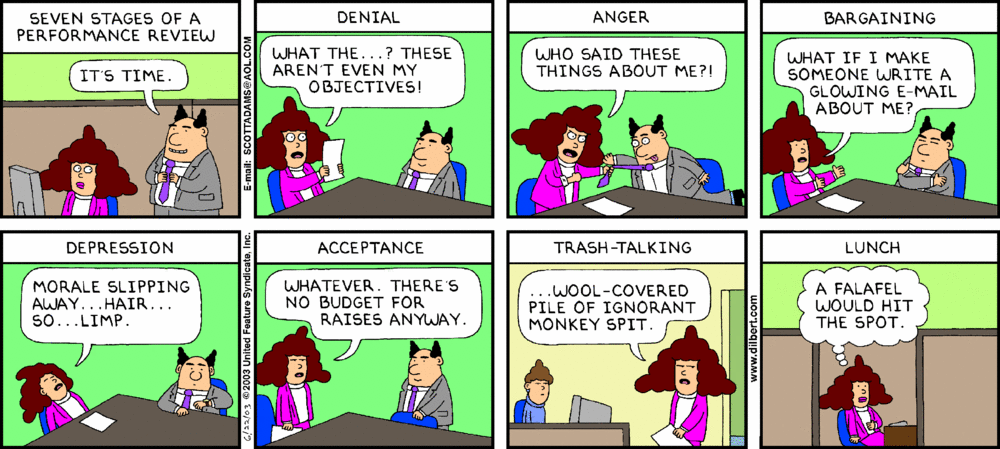I’ve never met anyone, manager or employee, that enjoys a performance review. Even if you know it’s going to be a good one, there’s still something nerve-wracking about having your work evaluated.
Enter Satoris Culbertson, an assistant professor of management at Kansas State University. Culbertson, working with associates at Eastern Kentucky University and Texas A&M University, is developing ways to improve performance reviews. Surveying more than 200 employees who just completed a review, the researchers found three types of employee goal orientations.
1. “Learning goal-oriented people like to learn for the sake of learning. They often pursue challenges despite setbacks.”
2. “Performance-prove goal-oriented people want to prove that they have competence to perform a job.”
3. “Performance-avoid goal-oriented people want to avoid looking foolish.”
Performance-oriented people, the researchers think, will only be satisfied with positive reviews because negative ones make them look bad. Learning goal-oriented workers, though, may be satisfied with negative reviews because they would view it as a teaching moment.
“Surprisingly, we found that learning-oriented people were just as dissatisfied with an appraisal that had negative feedback as the performance-oriented people were,” Culbertson said. “Nobody likes to get negative feedback—even those individuals who aren’t trying to prove anything to others, but instead are just trying to learn as much as possible.”
Culberston said that managers have to be careful when providing feedback to employees, because they can affect motivation, commitment, and performance.
“It is not so much that the performance review needs to be abolished, but we need to fix what is broken,” Culbertson said. “Instead of limiting ourselves to formal performance appraisals conducted once or twice a year, we need to think about performance management as a system that is linked with the strategy of the entire organization.”
In other words, the review process should be on-going.
“We can actually make the most out of the system,” Culbertson said. “But if we are only going to have once-a-year evaluations, we shouldn’t expect it to work.”
Culbertson offers three suggestions based on the research to help managers improve the evaluation process.
First, focus on constructive feedback, bringing in ways for improvement.
“Negative feedback is not the same as constructive feedback,” Culbertson said. “We should be careful that negative feedback is provided in a way that is more constructive because it can help people try to improve.”
Second, tread lightly with number-based reviews, because people view numbers differently.
“This is where our words are really powerful,” Culbertson said. “We want to make sure we are conveying to employees whether we are giving a good evaluation or describing something that needs to improve.”
Third, steer clear of the “sandwich” approach (i.e., positive , then negative, then ending with positive feedback).
“Sometimes the sandwich approach comes across as dishonest or not something that people will buy,” Culbertson said.
How do you conduct performance reviews? What works? What doesn’t? Please contribute to the conversation in the comments section below.
(Image: Dilbert.com)

